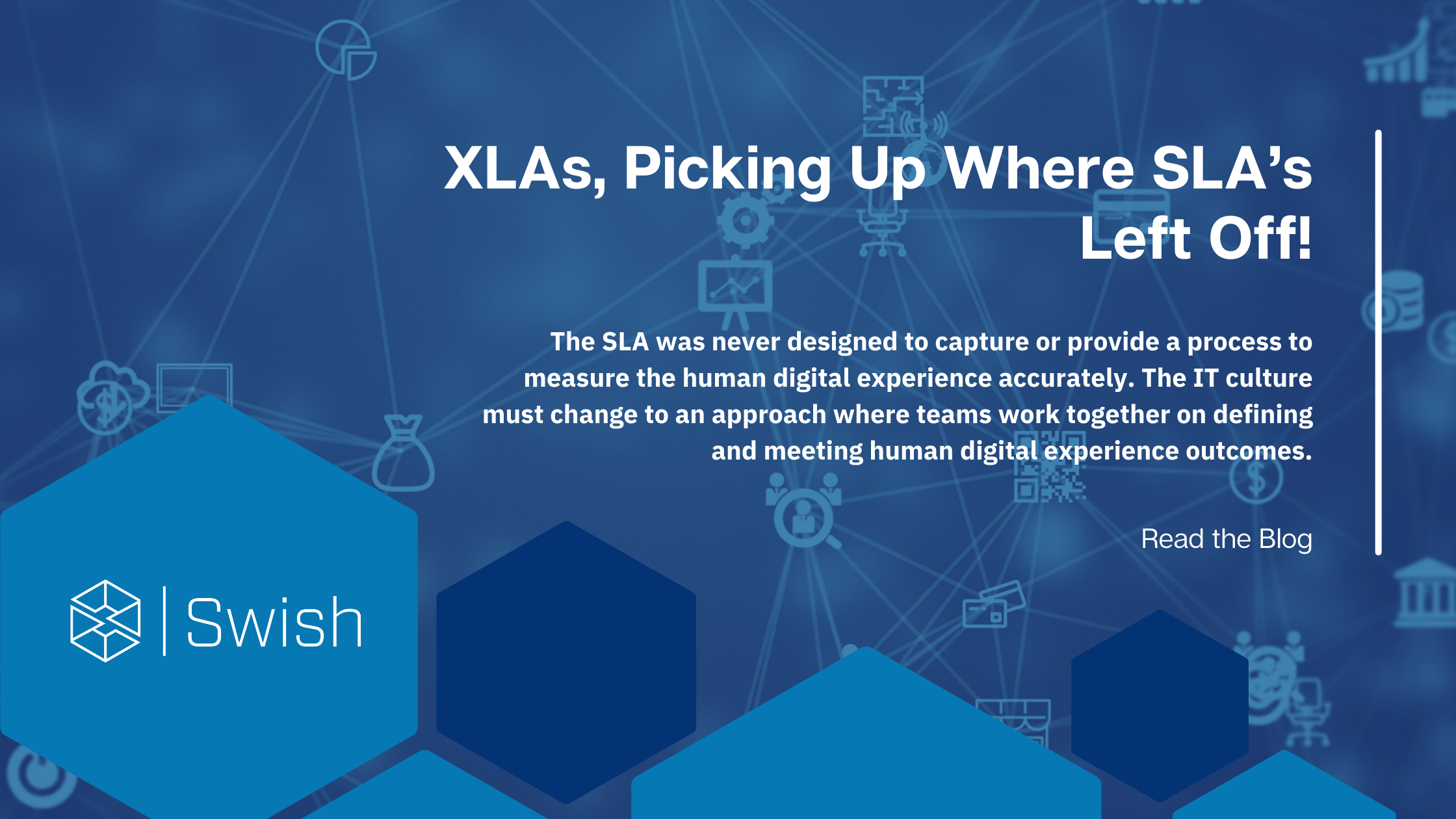
Revisiting the SLA
When used in isolation, the Service Level Agreement (SLA) comes up short in defining the real human digital experience for any given IT service. SLAs were first introduced in the late 1990s through the ITIL framework and are defined as a contract that outlines the complete agreement between a service provider and client. Key Performance Indicators (KPI) are used to measure whether a SLA is within compliance and contribute to the SLA’s overall makeup. These KPIs have historically focused on Availability, Serviceability, and Maintainability type metrics and define who is responsible for resolution when an SLA threshold is breached. Additionally, SLA’s are typically very siloed and, when taken alone, support a bureaucratic IT culture where there is very little cooperation. A culture where failures lead to finger-pointing, scapegoating and shirked responsibilities. All of which leave the digital human experience unattended. For example, a very typical KPI for an SLA is application availability of 99.999%. The application owner may be meeting this KPI consistently; however, individual users may still be affected by availability issues, that in turn affect their digital experience negatively. Who is looking out for the user? The SLA was never designed to capture or provide a process to measure the human digital experience accurately. IT organizations need to take a very different approach to quantify this experience than they have in the past. The IT culture and measures must change to an approach where teams work together on defining and meeting human digital experience outcomes.
The Business Case
According to Gartner, “By 2025, 70% of digital business initiatives will require Infrastructure and Operations (I&O) leaders to report on business metrics from the digital experience.” This is because the innerworkings of the human digital experience, within the modern workforce, are more complex than ever. Services are being consumed and delivered over complicated hybrid networks from multiple cloud providers. The vast array of consumer device form factors adds fuel to this fire by increasing complexity. It can be extremely challenging to establish measurable and meaningful SLAs for each of the different user devices, networks, cloud service providers, and application segments along the service delivery path. The actual human digital experience results from the culmination of all of them over time. Why is the service slow on my laptop but fast on my phone? Why does my laptop crash every time I access the service? Why is the service slow when I work remotely over my home Wi-Fi? Why does the service desk take so long to address my issues when I encounter a service problem? These examples are just some of the vast array of experiences that cannot be adequately measured via SLAs and add up over time to form the human digital experience.
Introducing the XLA
Experience Level Agreement’s (XLA) fill this gap. XLAs provide a human-centric measurement, which represents a commitment by an organization to create a positive human digital experience. The keyword “commitment” refers to a generative business culture where the human digital experience is at the forefront of most business decisions. Generative business cultures are high velocity, support and mandate cooperation, share risk amongst teams, and initiate inquiries when failure occurs. In short, XLAs support a performance-oriented business culture where the human digital experience is the forefront of the business. An example of an XLA would be the star rating system, where the customer or employee rates their perceived satisfaction for the given service. The business’s commitment would be that all services have a 4.0 rating or higher and all business decisions will strive to achieve these measures.
Conclusion
Giarte, a leading research and consultancy agency and early pioneer of the XLA movement, quoted an American Poet named Maya Angelou. Maya said, “People will forget what you said, people will forget what you did, but people will never forget how you made them feel.” A negative human digital experience adversely affects business fundamentals. Not only can it affect workplace productivity, but it can also directly affect employee retention, customer retention, et al. Human digital experiences affect all aspects of your business and have far-reaching consequences.
XLAs will not replace SLAs but when paired together, they will provide a human-centric approach, measure how the business service delivery performs, and the human perception towards those services. SLA’s will provide the operational insight, while XLAs will provide the human perception.





